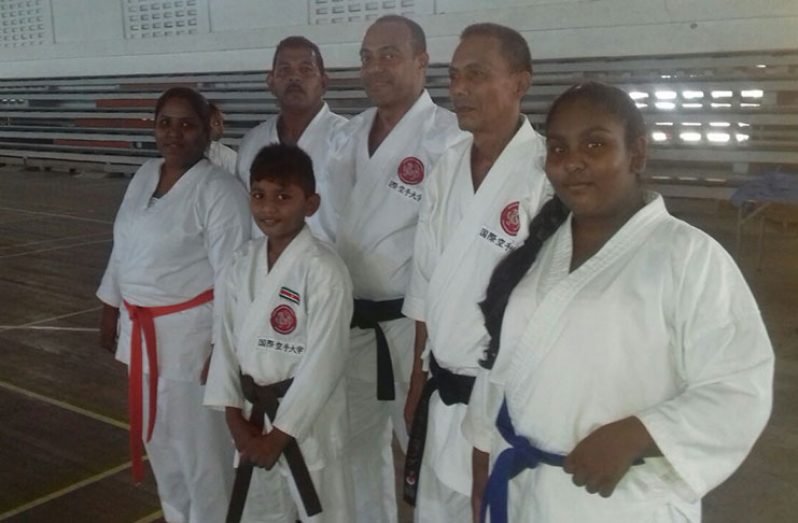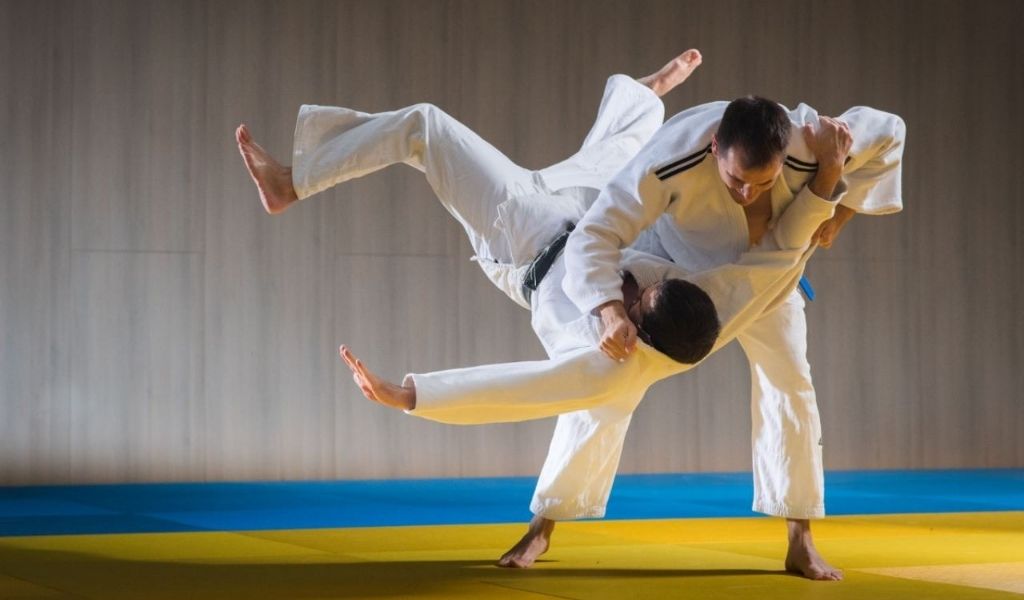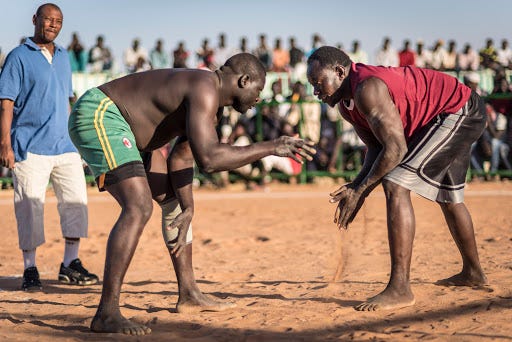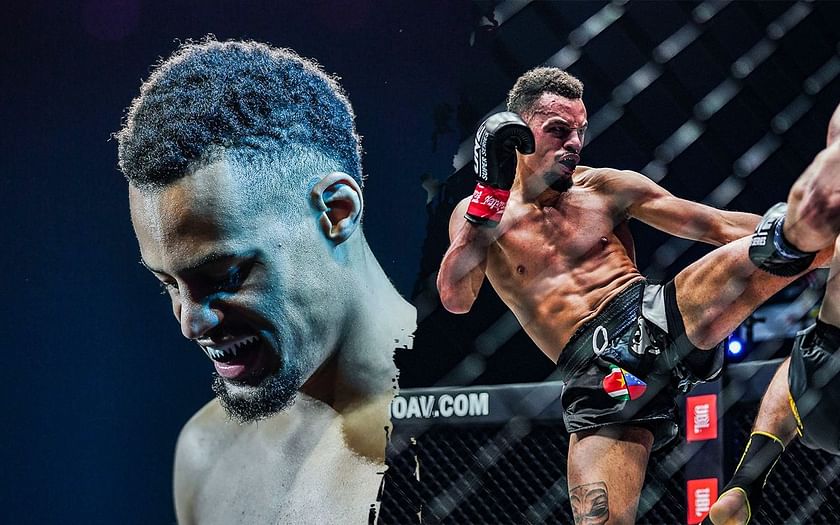Have you ever wondered about the martial arts traditions of different cultures? Well, let me tell you about the fascinating tradition of Surinamese martial arts. It’s an interesting subject with a rich history and unique techniques that you’ll definitely want to learn more about.
Suriname, a small country on the northeastern coast of South America, has a diverse population consisting of people from various ethnic backgrounds. As a result, Surinamese martial arts draw influence from a range of different styles and techniques. From the African influence of Capoeira to the Chinese influence of Wushu, Surinamese martial arts have a truly eclectic mix.
In this article, we’ll delve deeper into the history of Surinamese martial arts, exploring how it has evolved over time and the cultural significance it holds for the people of Suriname. We’ll also take a closer look at some of the most popular forms of martial arts practiced in Suriname, such as Saramaka Kampu, Nengre Kuminas, and Pencak Sillat.
So, if you’re curious to learn more about the fascinating tradition of Surinamese martial arts, buckle up and get ready for an exciting journey!

History of Surinamese Martial Arts
Surinamese martial arts have a rich and diverse history that dates back centuries. These traditional fighting techniques have evolved over time, incorporating influences from various cultures and regions. The origins of Surinamese martial arts can be traced back to the indigenous people of Suriname, as well as the African, Asian, and European immigrants who settled in the country.
Origins of Surinamese Martial Arts
The indigenous people of Suriname, such as the Arawaks and the Caribs, had their own unique fighting styles and self-defense techniques. These early forms of martial arts were primarily developed for hunting and protection from rival tribes. The indigenous people were skilled in hand-to-hand combat and the use of weapons, such as bows and arrows, spears, and blowguns.
With the arrival of African slaves during the colonial era, Surinamese martial arts began to incorporate African fighting techniques. Slaves were often oppressed and subjected to violence, leading them to develop their own martial arts styles as a means of self-defense. These styles, which emphasized agility, quick reflexes, and the use of improvised weapons, laid the foundation for the development of Surinamese martial arts.
Influences on Surinamese Martial Arts
In addition to indigenous and African influences, Surinamese martial arts have also been shaped by the cultural traditions of the Indian, Chinese, Javanese, and Dutch communities in Suriname. These communities brought their own martial arts practices to the country, further enriching the Surinamese fighting styles.
Indian immigrants, for example, introduced techniques from the ancient martial art forms of India, such as Kalaripayattu and Gatka. Chinese immigrants brought their expertise in martial arts such as Wing Chun and Tai Chi, which emphasized flexibility, balance, and energy flow. Javanese immigrants introduced Silat, a form of Indonesian martial arts known for its fluidity and unpredictability.
Dutch influence on Surinamese martial arts has primarily been in the form of discipline and organization. The Dutch colonial government in Suriname established training programs and structured martial arts schools to promote physical fitness and discipline among the local population.
Types of Surinamese Martial Arts
Surinamese martial arts can be categorized into two main types: traditional and modern. Traditional Surinamese martial arts refer to the styles that have been passed down through generations, retaining the techniques and philosophies of the past. Modern Surinamese martial arts, on the other hand, are influenced by contemporary martial arts practices and may incorporate techniques from other martial arts styles.
Traditional Surinamese Martial Arts
Traditional Surinamese martial arts include styles such as Saramaka Fu, Matuari, and Djuka Fu. Saramaka Fu is a martial art developed by the Saramaka Maroons, who are descendants of African slaves. It combines African and indigenous fighting techniques, emphasizing quick movements and the use of wooden weapons, such as sticks and machetes.
Matuari is another traditional Surinamese martial art that originated from the Matawai Maroons. It focuses on close combat techniques and includes grappling, throwing, and joint-locking techniques. Like Saramaka Fu, Matuari also utilizes wooden weapons for training and self-defense.
Djuka Fu, developed by the Djuka Maroons, incorporates elements of African, indigenous, and European martial arts. It emphasizes agility, footwork, and evasion, with techniques inspired by the movements of animals and nature.
Modern Surinamese Martial Arts
Modern Surinamese martial arts have been influenced by global martial arts practices and have evolved to incorporate aspects of disciplines such as Karate, Kung Fu, and Brazilian Jiu-Jitsu. These modern styles often focus on competitive sparring and self-defense applications, catering to a wider audience beyond the traditional Surinamese community.

Training and Techniques
Traditional Training Methods
Traditional Surinamese martial arts were traditionally passed down through oral teachings and practice sessions in community settings. These training sessions would often take place in open areas, such as village squares or forests, allowing practitioners to connect with nature and their surroundings.
Instructors, who were highly respected members of the community, would demonstrate techniques and explain the underlying principles and philosophies of Surinamese martial arts. Students would then practice these techniques in pairs or groups, learning through observation and repetition.
Basic Techniques of Surinamese Martial Arts
The basic techniques of Surinamese martial arts vary depending on the specific style being practiced. However, common techniques include punches, kicks, blocks, and strikes. Surinamese martial arts also incorporate grappling techniques, such as throws, joint locks, and submissions.
Footwork and evasive maneuvers are essential aspects of Surinamese martial arts, enabling practitioners to effectively dodge and counter their opponents’ attacks. Techniques are often executed with speed and precision, making use of the body’s natural movements and leveraging the opponent’s momentum.
Weapons and Equipment
Traditional Weapons in Surinamese Martial Arts
Traditional Surinamese martial arts make use of various weapons, some of which have historical significance within the country. Wooden weapons, such as sticks, machetes, and staffs, are commonly used for both training and self-defense purposes.
The use of the machete, a curved blade used for cutting vegetation, has become an integral part of Surinamese martial arts. While it originated as a tool for farming and survival in the dense rainforests of Suriname, the machete has been adapted into a formidable weapon in the hands of skilled martial artists.
Other traditional weapons in Surinamese martial arts include the bow and arrow, blowgun, and slingshot. These weapons were historically used for hunting and have been incorporated into martial arts training for their practical applications and as a way to connect with Suriname’s cultural heritage.
Modern Training Equipment
In modern Surinamese martial arts training, practitioners make use of equipment commonly found in other martial arts disciplines. Focus mitts, punching bags, and speed bags are used for striking and developing power, speed, and accuracy.
Training weapons, made of materials such as foam or rubber, are also used for sparring and practicing self-defense techniques in a safe environment. These training weapons mimic the weight and feel of traditional weapons while minimizing the risk of injury.
Protective gear such as gloves, shin guards, and mouthguards are essential when engaging in full-contact sparring or competitive matches. The use of protective equipment ensures the safety of practitioners while allowing them to test their skills in a controlled setting.

Famous Surinamese Martial Artists
Notable Figures in Surinamese Martial Arts
Over the years, Surinamese martial arts have produced several notable figures who have contributed significantly to the development and promotion of these fighting styles. One such figure is Sergio Dos Santos, a highly respected Surinamese martial artist who has dedicated his life to preserving and teaching traditional Surinamese martial arts.
Dos Santos has not only trained generations of martial artists but also conducted extensive research on Surinamese martial arts, documenting its history and techniques. He has been instrumental in organizing martial arts tournaments and events, bringing together practitioners from different styles and backgrounds.
Achievements of Surinamese Martial Artists
Surinamese martial artists have also achieved success on the international stage, representing their country in various martial arts competitions. Many Surinamese martial artists have won medals and accolades in disciplines such as kickboxing, Brazilian Jiu-Jitsu, and Karate.
Notable achievements include Surinamese kickboxer, Remy Bonjasky, who became a three-time K-1 World Grand Prix Champion and is regarded as one of the greatest heavyweight kickboxers of all time. Another Surinamese martial artist, Donovan Wisse, has made a name for himself in the world of Mixed Martial Arts (MMA), competing in organizations such as Bellator and ONE Championship.
Importance of Surinamese Martial Arts in Culture
Role of Martial Arts in Surinamese Traditions
Surinamese martial arts play a significant role in the cultural traditions of the country. They serve as a means of preserving Surinamese cultural heritage and connecting present-day Surinamese with their ancestors and traditional way of life.
Martial arts training and events often form a crucial part of Surinamese festivals and celebrations. Demonstrations and performances showcasing various Surinamese martial arts styles are held during these events, providing a platform for practitioners to showcase their skills and pass on their knowledge to younger generations.
Influence of Martial Arts on Surinamese Identity
Surinamese martial arts have played a crucial role in shaping the identity of the Surinamese people. They have fostered a sense of pride and unity among Surinamese communities, transcending cultural and ethnic differences.
Martial arts training promotes discipline, respect, and perseverance among individuals, instilling these values in the broader Surinamese society. Many Surinamese martial artists serve as role models, inspiring younger generations to embrace their cultural roots and pursue excellence in their chosen martial arts discipline.

Martial Arts Tournaments and Events in Suriname
Annual Surinamese Martial Arts Championships
The Annual Surinamese Martial Arts Championships is a highly anticipated event that brings together practitioners from various martial arts disciplines. This championship provides a platform for martial artists to showcase their skills, compete against their peers, and foster camaraderie within the Surinamese martial arts community.
During the championships, participants compete in different weight classes and divisions, ranging from traditional Surinamese martial arts to modern combat sports such as kickboxing and MMA. The championships serve as a showcase of the diversity and talent within Surinamese martial arts.
Surinamese Martial Arts Demonstrations
Surinamese martial arts demonstrations are held throughout the year to showcase the different styles and techniques practiced in Suriname. These demonstrations are not only a source of entertainment but also an educational experience for spectators, providing insights into the cultural and historical aspects of Surinamese martial arts.
Martial arts demonstrations often feature traditional drumming and music, enhancing the overall experience and creating an atmosphere that reflects the rich cultural heritage of Suriname. These events are open to the public, allowing individuals of all ages and backgrounds to witness the beauty and power of Surinamese martial arts.
Adapting Surinamese Martial Arts in the Modern World
Integration of Surinamese Martial Arts in Fitness Practices
In recent years, Surinamese martial arts have gained popularity as a form of fitness training. Many people are embracing these traditional fighting styles as a means of staying active, improving physical fitness, and learning self-defense techniques.
Fitness centers and gyms in Suriname have started incorporating Surinamese martial arts classes into their programs, catering to individuals seeking an alternative to conventional gym workouts. This integration of Surinamese martial arts into fitness practices has allowed these traditional fighting styles to reach a wider audience and become more accessible to the general public.
Reviving Traditional Surinamese Martial Arts
Despite the growing popularity of modern martial arts disciplines, efforts are being made to revive and preserve traditional Surinamese martial arts. Organizations and martial arts schools dedicated to preserving and promoting these traditional styles have emerged, ensuring that the techniques, philosophies, and cultural significance of Surinamese martial arts are passed on to future generations.
These organizations organize workshops, seminars, and training camps where practitioners and enthusiasts can learn from experienced instructors and deepen their understanding of traditional Surinamese martial arts. These initiatives are essential for preserving the rich history and cultural heritage embedded in Surinamese martial arts.

Surinamese Martial Arts in Popular Culture
Depictions in Surinamese Films and Literature
Surinamese martial arts have also found representation in popular culture, including films and literature produced in Suriname. Filmmakers and authors have incorporated martial arts themes and characters into their work, showcasing the power and beauty of Surinamese martial arts on the big screen or in written form.
These cultural depictions not only entertain audiences but also raise awareness about Surinamese martial arts, encouraging individuals to explore and embrace their own cultural heritage. It provides a platform for Surinamese martial artists to be recognized and appreciated beyond the martial arts community.
Popularity of Surinamese Martial Arts in Media
The rise of social media platforms has contributed to the popularity of Surinamese martial arts. Martial artists from Suriname are increasingly showcasing their skills and sharing their experiences through videos and posts on platforms such as YouTube and Instagram.
These online platforms provide a global audience with a glimpse into the world of Surinamese martial arts, allowing practitioners to connect with individuals from different countries and cultures. The exposure gained through social media has helped in expanding the reach and influence of Surinamese martial arts on a global scale.
Current Challenges and Future of Surinamese Martial Arts
Preservation of Surinamese Martial Arts
One of the significant challenges faced by Surinamese martial arts is the preservation of traditional styles in a rapidly changing society. Traditional forms of martial arts require dedicated practitioners and instructors who are willing to pass on their knowledge to the younger generation.
To address this challenge, efforts are being made to document and archive traditional Surinamese martial arts, ensuring that the techniques, philosophies, and cultural significance are captured for future generations. Additionally, collaborations between martial arts schools, cultural organizations, and government bodies are being established to promote the preservation and practice of Surinamese martial arts.
Expansion of Surinamese Martial Arts Globally
As Surinamese martial arts gain recognition and appreciation, the next step is to expand their presence beyond the borders of Suriname. This involves promoting Surinamese martial arts at international martial arts events, fostering collaborations with martial arts schools and organizations worldwide, and inviting international instructors to share their knowledge.
The expansion of Surinamese martial arts globally presents an opportunity for cultural exchange and learning, as practitioners from different countries can learn from Surinamese martial artists and vice versa. This cross-pollination of ideas and techniques can contribute to the growth and evolution of Surinamese martial arts on a global scale.
Benefits of Practicing Surinamese Martial Arts
Physical Fitness and Self-Defense
Practicing Surinamese martial arts offers numerous physical benefits. The training involved improves cardiovascular fitness, strength, flexibility, and coordination. It provides a full-body workout that engages both the upper and lower body, enhancing overall physical health and well-being.
Surinamese martial arts also instill self-defense skills, equipping practitioners with the ability to protect themselves in real-life situations. The techniques and strategies learned in Surinamese martial arts emphasize practicality, enabling individuals to defend themselves effectively against potential threats.
Mental and Spiritual Development
Surinamese martial arts not only strengthen the body but also foster mental and spiritual development. The discipline and focus required in training cultivate self-discipline, perseverance, and patience. Practitioners learn to overcome obstacles and push themselves beyond their limits, developing mental fortitude and resilience.
Surinamese martial arts also incorporate elements of mindfulness and meditation, encouraging practitioners to cultivate a calm and focused mind. Through the practice of movements and breathing exercises, individuals can attain a state of mental clarity and inner peace.
Impact of Surinamese Martial Arts on Youth
Empowerment of Surinamese Youth
Surinamese martial arts have a profound impact on the youth in Suriname, empowering them and providing an avenue for personal growth and self-expression. Martial arts training instills discipline, respect, and self-confidence in young individuals, allowing them to navigate the challenges of life with strength and determination.
Through martial arts, Surinamese youth learn important life skills such as goal setting, perseverance, and the value of hard work. These qualities can have a lasting impact, enabling them to excel not only in martial arts but also in other aspects of their lives.
Resilience and Discipline in Surinamese Youth
Surinamese martial arts teach young individuals the importance of resilience and discipline. Martial arts training requires commitment and dedication, as progress is achieved through consistent practice and perseverance.
By developing discipline and resilience, Surinamese youth can overcome obstacles and setbacks with grace and determination. These qualities are not only valuable in martial arts but also in personal and academic pursuits.
Ethical Principles and Philosophy in Surinamese Martial Arts
Respect and Integrity in Surinamese Martial Arts
Surinamese martial arts are deeply rooted in respect and integrity. Practitioners are taught to show respect to their instructors, training partners, and opponents. Respect is also extended to the art itself, as practitioners honor the rich history and traditions behind Surinamese martial arts.
Integrity is another core value emphasized in Surinamese martial arts. Practitioners are taught to uphold honest and ethical behavior both inside and outside the training environment. The philosophy of Surinamese martial arts encourages individuals to act with integrity, demonstrating fairness and honor in their interactions with others.
Values instilled through Surinamese Martial Arts
Surinamese martial arts instill values such as perseverance, humility, and compassion in practitioners. The training journey in Surinamese martial arts is characterized by hard work, challenges, and setbacks. By persevering through these difficulties, individuals develop resilience and the ability to overcome obstacles in life.
Humility is also an essential virtue in Surinamese martial arts. Practitioners learn to remain grounded and modest despite their skill level, recognizing that there is always room for improvement and growth. This humility fosters a sense of continuous learning and self-improvement.
Compassion is another value that Surinamese martial arts promote. Practitioners are taught to use their skills responsibly and to avoid using violence unless it is absolutely necessary for self-defense. Surinamese martial arts encourage practitioners to bring positive change to their communities and to be agents of peace and understanding.
Conclusion
Surinamese martial arts have a deep-rooted history and continue to play a vital role in Surinamese culture and identity. These fighting styles have evolved over time, incorporating influences from various cultures and regions. Traditional Surinamese martial arts preserve the techniques and philosophies of the past, while modern Surinamese martial arts embrace contemporary practices and global influences.
Surinamese martial arts offer numerous physical, mental, and spiritual benefits, promoting physical fitness, self-defense skills, and personal development. They empower Surinamese youth, instilling discipline, resilience, and valuable life skills.
Efforts to preserve and promote Surinamese martial arts in Suriname and globally are essential to ensure that these traditions continue to thrive. By embracing Surinamese martial arts, individuals connect with their cultural heritage, contribute to their communities, and experience the beauty and power of this ancient art form.